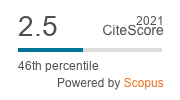MATHEMATICAL METHODS FOR DETERMINING THE FOOT POINT OF THE ARTERIAL PULSE WAVE AND EVALUATION OF PROPOSED METHODS
Abstract
The evaluation of the arterial wall condition is most frequently based on such markers as arterial pulse wave velocity (PWV) and pulse transit time (PTT). To calculate these markers, it is necessary to determine the location of the foot of the arterial pulse wave (APW). This foot point is usually determined with the help of the second derivate maximum or tangent intersection foot-to-foot methods. This paper proposes two original methods for locating the APW foot point, namely: the bottom straight-line and forefront tangent intersection method and the APW foot polynomial approximation method. The main objective of this study is to compare the originally proposed methods with the tangent intersection and the second derivate maximum methods, with respect to error dispersion under different sound-to-noise ratios (SNR) and difference between the foot point of the APW without noise (APW reference value) and the foot point of the APW with a certain SNR. The analysis of the APW signal with additive noise reveals that the second derivate maximum method results in the widest error dispersion, whereas the tangent intersection method results in the greatest difference between the APW reference value and the foot point of the APW with additive noise. The least difference between the APW reference value and the foot point of the APW with additive noise, as well as the least error dispersion is achieved in the APW foot polynomial approximation method.
Downloads
Published
Issue
Section
License
Copyright terms are indicated in the Republic of Lithuania Law on Copyright and Related Rights, Articles 4-37.





